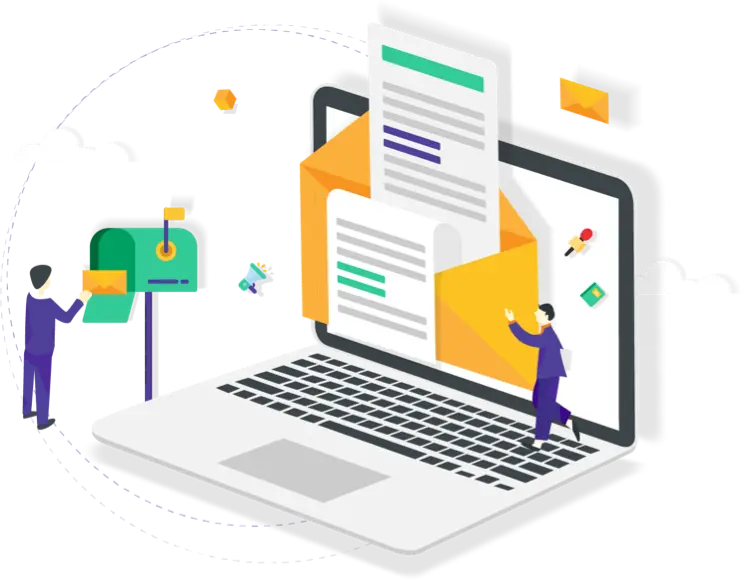
The employee life cycle refers to the experience an employee, candidate or ex-employee has when working in your organization. The term covers a broad range of human resources (HR) stages, from pre–recruitment all the way through to work exit. Each stage of the employee life cycle has a part to play in engaging employees and ensuring they are at their happiest when at work. This article covers the definition of the employee life cycle, its different stages, and what HR and leaders can do to focus on each stage of it, to maximize employee engagement.
Related articles:
The Ultimate Guide to Start Automating Business Processes Today
5 Simple Strategies for Improving Workforce Experience
What is the employee life cycle?
The employee life cycle is the journey an employee takes through a company. This is a comprehensive, stage by stage analysis of all the different moments and interventions an employee might take as they spend time with the organization, starting from before they are even hired and lasting until they have left (and beyond).
The reason for analyzing the employee life cycle and its different stages is because it can provide a structured and methodical way to understand how an employee might be engaged at work. From an HR perspective, the various stages of the employee life cycle can be separated, and feedback gleaned from each one. If HR and organizational leadership are aware of a particular challenge in employee satisfaction, sequential analysis of employee lifecycle stages might enable isolation of the issue and enable a swift fix.
Analysis of the employee lifecycle can also facilitate the separation of HR duties, and, in larger organizations, help align HR into subdivisions and specialisms, focusing HR teams on different parts of the employee experience.
Employee Life Cycle Stages
The employee life cycle can be broken down in many different ways, but a common and clear way to do this is splitting the journey into five areas: Attraction, Recruitment, Onboarding, Career Development, and Offboarding. Let’s take each of these five areas in turn and explore what they involve.
Attraction
Attraction involves interventions which will entice candidates to apply to your organization.
It is worth noting at this point that the employee life cycle is just this: it’s cyclical, which means that the experience of those employees who have resigned might influence the decisions of candidates who have an opportunity to come join. Candidates will be aware of your organization’s reputation through ratings and reviews on websites such as Glassdoor or LinkedIn, as well as through word of mouth. Prospective employees can also read about your organization and what it can offer its employees through its values and employer value proposition (EVP).
Employers must create, market, and embody a series of values, which together form an identifiable organizational culture. This will often be aligned with the organization’s purpose, target market or goals. These core values can attract a certain employee persona; candidates will want to know if the organizational values align to their own. This approach is known as values-based recruiting and if undertaken effectively, can result in the hiring of committed employees who are in tune with what the company does.
Organizations can also attract candidates through demonstrating and advertising what they offer employees. This can include elements such as an attractive working environment, perks, benefits, salary, time off, working for a renowned company, training and development, or career progression. The EVP communicates these benefits, and can be viewed as an exchange: what the organization can offer the employee in return for their skills, abilities, and loyalty. The EVP must be committed to and sustained. If an employee joins and what they have been promised is not there, then the psychological contract has been broken before any work has even been undertaken.
Recruitment
Organizations must build values, attraction, and the EVP into their recruitment activities, however there is much more work to do when undertaking talent acquisition interventions. To begin with, organizations must develop a consistent and structured approach to recruitment. This involves the development of job descriptions and competencies which illustrate clearly what each role involves and how effective performance is assessed. Job adverts and interview guides can then be developed according to these job descriptions and frameworks. Recruitment adverts and employer branding should be values-based and illustrate the EVP.
Interview guides should be structured to include behavioral questions, an interview technique built on the principle of past performance being the best indicator of future performance. Managers must be trained on how to use these interview guides and minimize unconscious bias when selecting candidates.
HR teams must work with leaders on creating a full recruitment strategy which accounts for different sourcing techniques and selection methods, depending on the scope of the role and the recruitment challenges experienced. The best recruitment processes are ones which are consistent, yet allow for flexibility and agility when needed.
Onboarding
SHRM reports that 69% of employees will remain at a company for at least three years if they experience great onboarding. Depending on the definition, onboarding starts with a job offer and ends after the completion of the employee’s probation period.
The employee’s line manager must put together a comprehensive induction plan which is completely tailored to the needs of the employee, enabling them to hit the ground running. The line manager should discuss this induction plan with the employee before they join, and ensure that it covers everything they expect, adding or amending items as needs be. The induction plan typically covers the probation period (usually three to six months), beginning with employee orientation training. It will also introduce them to various managers and departments and include meetings and training sessions with other employees, the outcome being that the new joiner is fully trained and briefed on every aspect of the role.
In addition to a progressive induction plan, managers must also regularly meet with new joiners and assess how they are settling in. This often takes the form of probation review meetings but can also be through regular one-to-one catch ups or coffee breaks. The idea here is for the manager to always present themselves as available and supportive.
The final part of effective onboarding is to ensure socialization opportunities for new joiners. This is time for the employees to mix and make new friends at work. Arguably the most important part of onboarding, socialization creates camaraderie and contributes significantly to a positive work culture.
Career Development
Employees expect to receive regular career development, attuned to their needs and wants. Career development must be an ongoing process; a common and effective approach is to align it to the organization’s performance development processes, where goals and capability are reviewed regularly. As part of this process, managers can build on feedback and the reviewing of goals with a personal development plan. PDPs – like business goals – can be set at the start of the year, and be ‘SMART’ (specific, measurable, achievable, realistic, and time-bound).
In order to make progress on their PDPs, employees should be offered (or enroll on) training courses or be offered coaching or mentoring which will develop skills. This process should be two-way; with employees being encouraged to be in control of their own development, but leaders and HR needing to offer development opportunities, as well as time for the employee to complete them.
A culture of career development is predominantly focused on learning interventions fully supported by senior leadership. The rationale behind this is because in general, all employees seek development and progression. Offering this might come at a cost to the organization in terms of money and time, but the return is that employees will be skilled in the areas they need to be in order to succeed, and they will be more engaged because of this. This will in turn encourage loyalty and enable the organization to retain the right people who are aligned to their roles and drive for great results.
Offboarding
The final stage in the employee life cycle concerns the offboarding of employees, and what happens when they decide to leave (or are asked to leave) the organization. Offboarding is easy to forget or ignore, given that employees have often irreversibly committed to their decision to move on. Nevertheless, this stage can provide valuable insights about working life in the organization and how leaders and HR can work to enhance the work experience for new recruits.
When an employee resigns, it’s essential they are given an exit interview as soon as possible. If an exit interview is conducted as soon as the employee resigns, it allows for the employees to be asked for more information or maybe even a chance at correcting anything which isn’t right, for the employee to possibly be retained. Exit interview feedback must always be compiled, analyzed, and presented to senior leadership. Most importantly of all, it must always be acted upon, with a view to improving the employee life cycle and organizational engagement.
Offboarding employees must be treated with respect and dignity. Their final pay should be processed on time and in full. They must be included in all meetings and tasks during their notice period, and should they have questions or concerns after they have left, still be listened to and respected. Ex-employees can leave feedback on Glassdoor or tell friends and family what it was like to work in your organization. This in turn affects the organization’s reputation and can therefore impact candidate attraction and recruitment.
Manage your employees’ life cycle with an HR platform
The employee lifecycle is detailed and complex. Its cyclical nature means that every stage needs to be focused on and treated with care. Using an HR platform is a great way to focus on the employee life cycle and ensure that every area is paid attention to, in order to drive employee engagement.
HR platforms can demystify the complex nature of people and operating at work. The best HR platforms can cover all elements of the employee life cycle, including candidate attraction and recruitment, pulling through employee records, onboarding, payroll, training, and helping with the offboarding process. HR platforms are often cloud-based and can be fully agile, depending on the needs of the business. They bring many areas of HR online and provide responsive and flexible tools to enable leaders to focus on HR matters. They can also serve as internal communication tools that connect human resources departments to others across the organization as well as with the employees they serve.
One example of a comprehensive HR platform is PeopleSpheres’ HR experience platform. This platform can be fully tailored and customized according to the HR needs of your business. There is a centralized HR portal, onboarding tools, survey tools, employee self-service functionality, workflow and reporting tools, record keeping functionality, and the ability to build employee profiles. This comprehensive suite of functions allows for every facet of the employee life cycle to be covered and will ensure that leaders and HR teams are fully supported as they work to support and enhance the employee experience.
Conclusion
We have seen that building and sustaining the employee life cycle to drive engagement can be very complicated. By their nature, people are unique and diverse, and every employee will have their own expectations of the organization. Some elements of the employee life cycle are easy to assume that they will take care of themselves; especially the attraction and offboarding stages.
HR needs to work with leaders on training and building awareness of the employee life cycle. Keeping this going is a team effort, and if one element of the lifecycle is lacking or fails, then this can have repercussions on other stages as well.
Using an HR platform can be a great way to maintain focus on all areas of the employee life cycle. HR platforms are designed to simplify HR operations through ease of use and moving many areas of the traditionally paper-based HR function online. This means that recruitment and retaining employees, tracking performance, training people, and offboarding processes become a lot easier to do. Consequently, you will have more time to spend on enhancing the employee life cycle to benefit your people and improve employee engagement along the way.




-640x380.jpg)
-640x380.jpg)